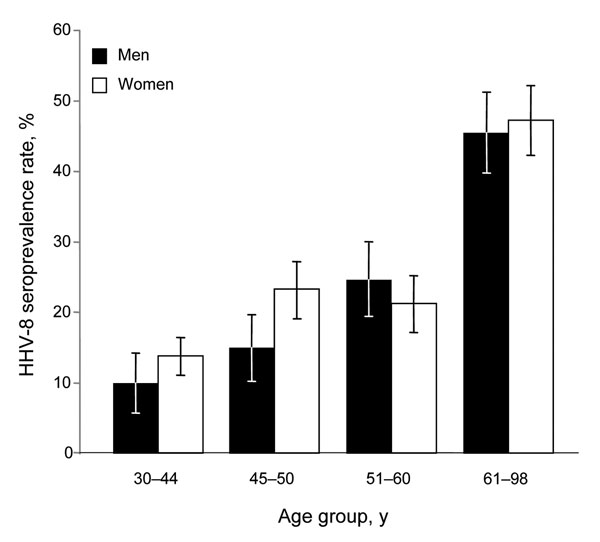Volume 16, Number 3—March 2010
Letter
Human Herpesvirus 8, Southern Siberia
Figure

Figure. Age-dependent human herpesvirus 8 (HHV-8) seroprevalence rates for 745 persons in southern Siberia 25–98 years of age who lived in the Ust Orda, Ulan Ude, or Chita districts during 1995. Seropositivity was based on strict criteria; only samples showing punctuate nuclear staining clearly reactive at a dilution >1:160 were considered HHV-8 positive. All 187 HHV-8–seropositive samples were tested for antibodies directed against HIV-1/2 by using Genscreen HIV-1/2 Antibody Assay (Bio-Rad Laboratories, Marnes-la-Coquette, France); only 2 were seropositive. Error bars indicate 95% confidence intervals.
Page created: December 14, 2010
Page updated: December 14, 2010
Page reviewed: December 14, 2010
The conclusions, findings, and opinions expressed by authors contributing to this journal do not necessarily reflect the official position of the U.S. Department of Health and Human Services, the Public Health Service, the Centers for Disease Control and Prevention, or the authors' affiliated institutions. Use of trade names is for identification only and does not imply endorsement by any of the groups named above.